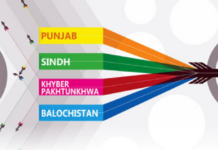ISLAMABAD: The Auditor General of Pakistan (AGP) has flagged serious lapses in the National Bank of Pakistan’s (NBP) credit approval and risk management practices, revealing that the bank extended and restructured large-scale financing facilities, amounting to over Rs. 40 billion, to financially weak and high-risk corporate borrowers, including Cnergyico PK Limited, JK Sugar Mills, and Waves Corporation Limited, among others.
According to the audit report for FY 2024-25, NBP’s management granted funding facilities worth Rs. 27.842 billion to several borrowers with poor financial health and weak repayment capacity. These borrowers had been previously identified by the Bank’s external auditors as entities requiring close monitoring due to deteriorating performance.
The list of borrowers included Cnergyico PK Limited (Rs. 17.575 billion), JK Sugar Mills Limited (Rs. 4.389 billion), Waves Corporation Limited (Rs. 1.949 billion), Tariq Corporation Limited (Rs. 894 million), and Diamond Tyres Limited (Rs. 691 million), among others.
The audit noted that NBP’s credit approval mechanism suffered from significant weaknesses, citing inadequate risk assessment, insufficient due diligence, and ineffective oversight. “The lack of prudent credit decisions may result in substantial credit losses, thereby affecting the bank’s financial stability and profitability,” the report warned.
In its response, the bank’s management claimed that loan approvals were made “on merit” and in accordance with established procedures. However, the auditors rejected the explanation, stating that granting credit to financially stressed borrowers reflected “undue favoritism” and poor governance.
Separately, the audit pointed to another major irregularity, the restructuring of a Rs. 12.934 billion financing facility for M/s Cnergyico PK Limited, despite the company’s unsatisfactory repayments, overdue letters of credit (LCs), and cash flow issues. The decision, according to the audit, exposed the bank to further financial risk and contradicted NBP’s internal control policies.
The AGP’s report cited NBP’s Organizational Circular No. 05/2018, which emphasizes the branch manager’s role as the first line of defense in maintaining a strong control environment. However, the audit found that management decisions contradicted these principles, allowing high-risk exposure to persist.
NBP’s management responded that it was “actively working to reduce exposure to Cnergyico” and closely monitoring the company’s credit portfolio. Yet, the audit noted that this statement itself confirmed the borrower’s heightened risk profile.
The report further revealed that despite repeated reminders on November 25, 2024; January 6, 2025; and January 13, 2025, the Departmental Accounts Committee (DAC) meeting was not convened by the Principal Accounting Officer (PAO) to discuss these issues.
The AGP has recommended that NBP review and strengthen its credit risk management framework, ensure that financing facilities are extended only to creditworthy borrowers, and prevent any restructuring that compromises the bank’s financial integrity.























